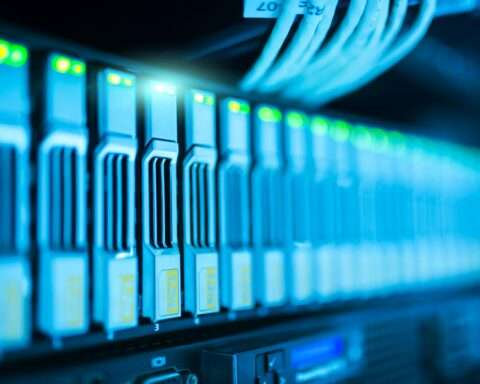The U.S. Department of Energy is looking to use artificial intelligence technology to help speed the adoption of clean energy sources in the fight against climate change.
The agency is also researching potential benefits for electric grid stability, while studying the challenge of meeting new energy demand from AI data centers.
“Artificial intelligence can help crack the code on our toughest challenges from combating the climate crisis to uncovering cures for cancer,” Energy Secretary Jennifer Granholm said in a press release. The DOE is “accelerating its AI work on multiple fronts to not only keep the US globally competitive, but also to manage AI’s increasing energy demand so we can maintain our goal of a reliable, affordable and clean energy future.”
For example, the DOE has allocated $13 million to an initiative at the Pacific Northwest National Laboratory that seeks to speed up the permitting process for energy infrastructure projects. The project will use an AI-powered large language model to centralize data from 50 years of projects that have undergone environmental reviews required by the National Environmental Policy Act (NEPA).
The project, known as PolicyAI, will catalog and make historical NEPA documents searchable. Right now, new energy projects such as transmission lines or wind and solar farms are delayed by the NEPA review process. By allowing easy access to previous environmental review documents, PolicyAI will potentially speed up the approval process, the DOE said.
The AI initiatives come in the wake of a renewed federal emphasis on responsible use of artificial intelligence. Earlier this year, the White House Office of Management and Budget released its AI-related policy for federal agencies, which includes public disclosure of all the ways each agency uses artificial intelligence.
The DOE also released two reports on potential applications for AI on the electrical grid: “AI for Energy: Opportunities for a Modern Grid and Clean Energy Economy,” a broad overview of potential AI uses in the field of energy, and “Advanced Research Directions on AI for Energy,” which provides more details on the specific techniques, models and computing infrastructure needed to implement AI solutions.
A public list of the artificial intelligence projects that the DOE is involved in has also been published online. The list includes 158 projects being pursued by the DOE or national research laboratories that receive funding from the department.
One project involves building a large language model chatbot like ChatGPT specifically to help scientists and engineers, while other projects aim to automate maintenance and safety procedures for nuclear reactors.
The DOE is also collaborating with the Federal Emergency Management Agency (FEMA) on Wildfire GPT, which will use AI to improve predictions of wildfire risk.
Another project by the National Energy Technology Laboratory aims to use artificial intelligence to improve the efficiency of carbon capture systems.
The agency is also taking action to manage the risks AI poses to the grid. The DOE announced that the Office of Cybersecurity, Energy Security, and Emergency Response will study unintended consequences of using AI as well as potential malicious use of AI to destabilize the grid.
Artificial Intelligence comes with a high energy demand. New data centers are driving up the need for new energy generation — including fossil fuel power plants, which runs counter to the DOE’s goals to adopt cleaner forms of energy.
A new working group will be formed to make recommendations by June on how to manage the energy demand of AI data centers.












